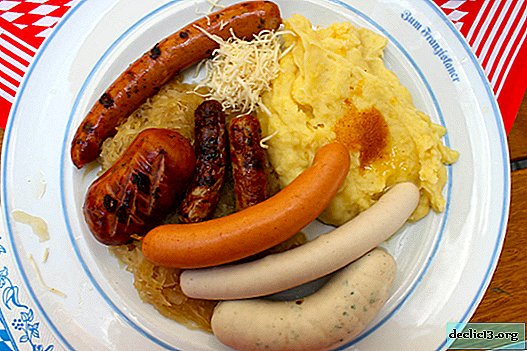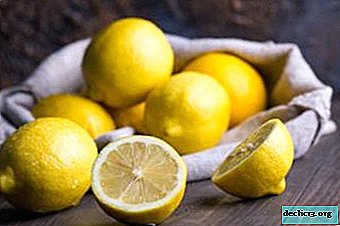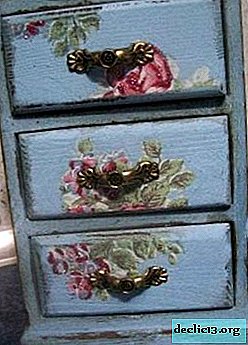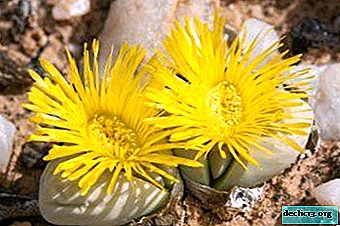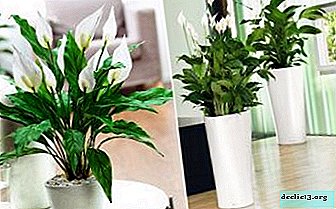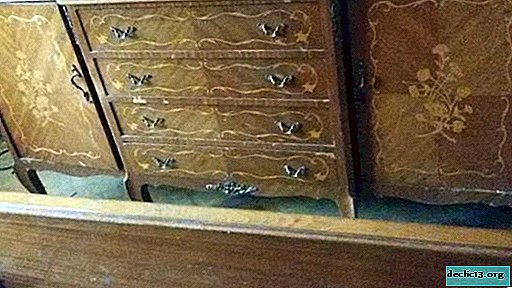Features of the care and cultivation of violet varieties Bronze Horseman
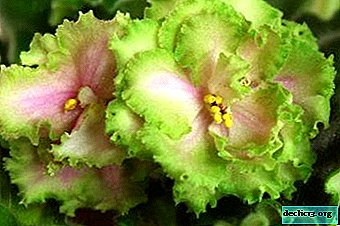
Violet is a flower whose beauty can be admired forever. Due to the variety of varieties from only one violet, you can create a whole floral arrangement on your balcony.
Of all the variety, the Bronze Horseman variety is worth highlighting. Its peculiarity is long, beautiful flowering, easy care, which even a novice can cope with. Read about it in our article. It will also be useful to watch an informative video on the topic.
General description of the variety
The main advantage of the variety is the green wavy border of the leaves. Flowers are large and lush, medium in size. The edges of the petals are wavy. Flowering lasts 10 months and throughout this time the buds are large, located throughout the brush. Their number may be small, but they are all large.
When and how did it appear?
The violet variety The Bronze Horseman was eaten in 2011 by domestic breeder Elena Lebetskaya. She wanted to get unusual flowers that would combine favorably with a shade of leaves. Description and photos of the varieties that Elena Lebetskaya brought you can be found in this article, and about the Isadora variety read here.
Appearance
The following characteristics of appearance are characteristic of the Bronze Horseman variety:
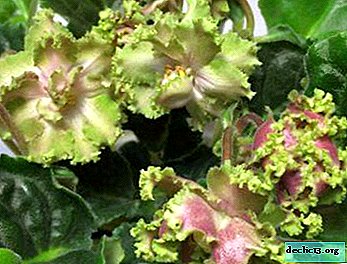 Leaves. The sheet plate is round in shape, it has wavy edges. The surface is covered with fine pile. The shoots of a young plant are light green in color. Old leaves turn dark green. The color of the foliage is monophonic, there are no inclusions. As soon as a full-fledged rosette is formed, then all the leaves will become the same color.
Leaves. The sheet plate is round in shape, it has wavy edges. The surface is covered with fine pile. The shoots of a young plant are light green in color. Old leaves turn dark green. The color of the foliage is monophonic, there are no inclusions. As soon as a full-fledged rosette is formed, then all the leaves will become the same color.- Flowers. On one brush, 3-5 large buds are formed. During flowering, they are all the same size. The surface of the petals is waxy, and the color is pink or white. Their edges are uneven, lace, velvety. Color is light green or bright green. At the border of pink and green, a copper tint appears, hence the name of the plant.
- The stalks. They are tight, fleshy and break easily. In the center of the outlet, they are directed upwards, and in the rows they diverge on the sides. Since they are rather fragile, it is important to be extremely careful during the transplant.
- Root. The root system is small and weak. The soil should always have been loose, air- and moisture-permeable.
Distinctive Care Features
Temperature mode
The plant feels great in a warm and humid room. Temperature indicators should be within 15-22 degrees of heat. If these indicators are lower or higher, then this will lead to the development of diseases. If you grow a violet on a window, then in the summer move the pot with it to the edge of the windowsill to protect it from direct sunlight, and in winter - from a heat source closer to the sun. Violet does not respond well to drafts, so growing it is better on a dull window.
Location
The Bronze Horseman is grown on windows facing north, west or east. For full development and growth, lighting is necessary. For violets, it must be scattered. In winter, you will have to take care of the additional illumination with fluorescent lamps. Otherwise, the buds will lose their brightness, and the leaves will become faded.
Humidity and watering
 For a plant, humidity of 50% is considered permissible. It is impossible to spray a flower, as this is fraught with the development of pathogenic microflora. To moisturize, place water containers in the room.
For a plant, humidity of 50% is considered permissible. It is impossible to spray a flower, as this is fraught with the development of pathogenic microflora. To moisturize, place water containers in the room.
Regular and plentiful watering is important for violets.. Moisturize the soil on the same day using the same amount of water.
In winter, water once a week, and in summer - 2 times. Remove excess moisture from the pallet and wipe it with a cloth.
For this variety, it is preferable to use wick irrigation. Its peculiarity is that the plant itself can absorb the necessary amount of moisture.
Top dressing
Violet is not particularly demanding on top dressing. She has enough of everything in universal soil. During intensive flowering, mineral complex compounds can be added. You can buy them at the flower shop. Only during the preparation of the solution, use a dosage 2 times lower than that indicated in the instructions. Fertilize every 2-3 weeks.
Planting and growing
Soil requirements
This flower requires loose soil with the addition of perlite or vermiculite. You can buy a ready-made substrate or cook it at home. To do this, take sheet, turf soil and peat in a ratio of 3: 2: 1. Put drainage on the bottom of the pot using gravel, broken ceramics.
Pot
- Shallow containers are suitable for Violet Bronze Horseman.
- In this case, you need to choose pialoid-like pots. They are much better than rectangular ones.
- Diameter of capacity is 10-15 cm, no more. This is enough for the normal development of the root system, and the plant will stimulate its growth in buds and leaves.
- Pots made of natural materials are best suited. These are products from ceramics, clay, pressed wood.
Transfer
 Violet The Bronze Horseman does not need a transplant. Transshipment is suitable for her. The reason is that she has a weak and small root system. A plant can be transplanted only if it has a lot of stepsons. Transshipment is carried out once every six months. There is already enough nutrients in the sprinkled soil for the normal growth of the crop, so fertilizing is not necessary. The procedure is as follows:
Violet The Bronze Horseman does not need a transplant. Transshipment is suitable for her. The reason is that she has a weak and small root system. A plant can be transplanted only if it has a lot of stepsons. Transshipment is carried out once every six months. There is already enough nutrients in the sprinkled soil for the normal growth of the crop, so fertilizing is not necessary. The procedure is as follows:
- Carefully remove the bush from the pot.
- Move it to a large capacity tank.
- Sprinkle the substrate at intervals, slightly sprinkling it with water.
- Tamp lightly so that the soil remains loose.
Propagation Features
Cuttings
For propagation, leaf cuttings are used.. Thanks to them, you can get high germination, even if you use a fragment of the sheet. Procedure:
- From the second row, choose a healthy and intact leaf.
- Carefully break it off and sprinkle the wound with ash.
- Cut the stem from the leaf at a distance of 2-3cm. Place it in a glass with soil.
- Cover with a film to create a greenhouse effect.
- After 3-4 weeks, sprouts will appear.
If an adult plant has stepsons, then they should also be planted in a container.
IMPORTANT: It is the children who are able to give identical flowers, like the mother's violets. When using a leaf for propagation as a result of a mutation, the leaves may differ.Seeds
The seed method of propagation of violets is used only by experienced growerssince it is a very laborious process. But the result can be just wonderful, because it was in this way that a large number of varieties of violets were bred.
Disease
Violet The Bronze Horseman is infected with fungal diseases. Among them, the most common:
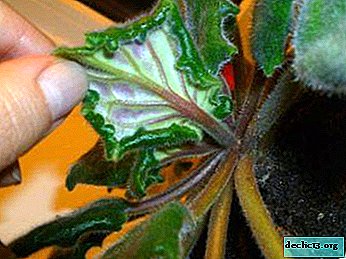 late blight;
late blight;- gray and brown rot;
- root rot.
The main reason for the development of violet diseases is the failure to comply with the rules of agricultural technology (waterlogging, use of cold water, low temperature and high humidity). For the fight using such drugs:
- Maxi.
- Actara.
- Provo-do.
- Actofit.
- Fitoverm.
Of the pests, the danger is:
- aphid;
- ticks;
- thrips;
- nematodes.
Watch the video about the diseases and pests of violets:
Conclusion
Violet The Bronze Horseman is an ornamental plantwhich can decorate balconies and windows with its lush flowering. But for its extension, you need to make an effort and carefully care for the flower.
It will not take much time and effort, but the decorative appearance and health of the plant will not suffer. Good luck with floriculture!

 Leaves. The sheet plate is round in shape, it has wavy edges. The surface is covered with fine pile. The shoots of a young plant are light green in color. Old leaves turn dark green. The color of the foliage is monophonic, there are no inclusions. As soon as a full-fledged rosette is formed, then all the leaves will become the same color.
Leaves. The sheet plate is round in shape, it has wavy edges. The surface is covered with fine pile. The shoots of a young plant are light green in color. Old leaves turn dark green. The color of the foliage is monophonic, there are no inclusions. As soon as a full-fledged rosette is formed, then all the leaves will become the same color. late blight;
late blight;